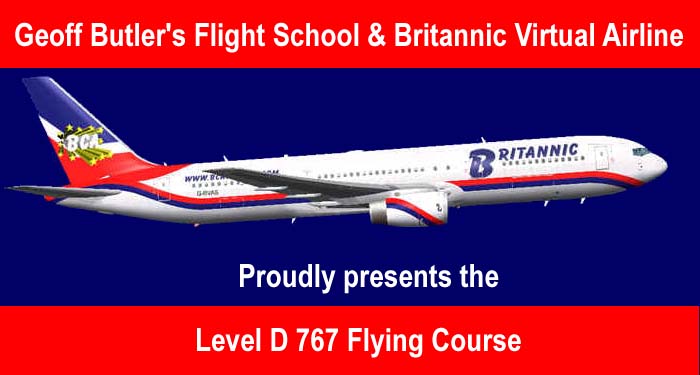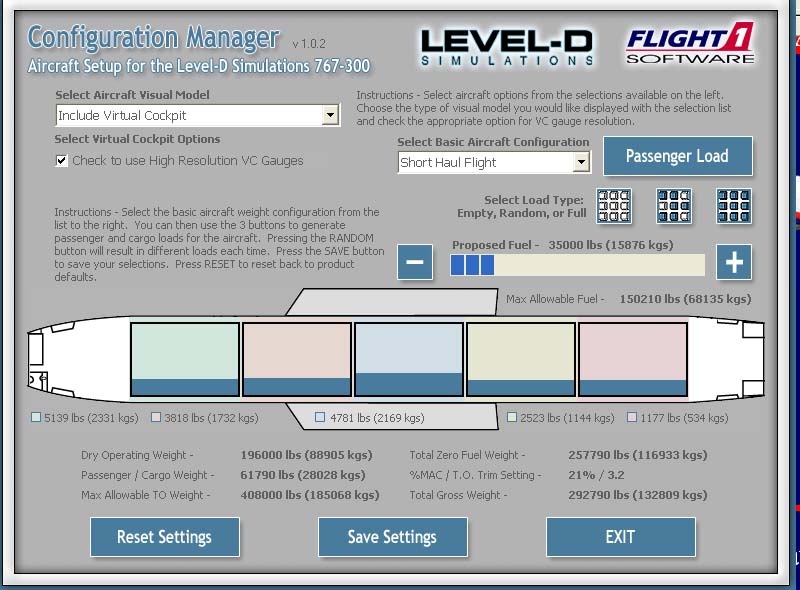

Lesson 1
Pre Flight Preparation Outside the FS Programme
Before you fly you must work out your flight plan and payload weights using the level D Configuration Manager.

Flight plan the route.
I use the Fs Navigator 4 for flight plans you then have to just edit the ends to fit in Standard Instrument Arrivals (STAR) and Departures SID . With Fs Navigator 4 you only have to enter the 4 letter airport ID Codes in and press autoroute it puts all the waypoints in. I also suggest that you sign up for Navigraph and update your FMC navigation points and the Fs Navigator 4 navigation points. These are known as AIRAC cycles they have a number such as 0407 this would mean 04=April 07 =2007. These change monthly. All you need to do is then export the flight plans into FS.
I also use a programme called Radar Contact which is a realistic ATC programme. Also from making this flight plan it can prime a weather programme called Active Sky. It is well worth purchasing all of these programmes. It does makes it about as real it could get.
It is suggested you learn everything about the aircraft first before using these programmes as the workload can get high. An excellent book on the 767 is written by Captain Mike Ray. This is a must book for serious simmers.
Fuel and Baggage
Baggage allowance per passenger for example would be 30kgs. Lets say we have a full load today of passengers and no cargo. The 767 holds 264 passengers. The combination of passengers and baggage give us a Zero Fuel weight of 257790 Lbs. You need this figure for the FMC ZFW Box later. Below that the 21%/3.2 trim setting is important as well for the FMC.
Flying from UK to most of the holiday resorts on the Europe Mediterranean Coastline a fuel load of between 30000 and 40000 lbs of fuel will cover it.. This allows a climb to 41000 ft for the cruise. 45 mins holding and a diversion plus a head wind component. Make a note each time you arrive at a holiday resort so next time you will know. Build up a fuel log for different mileages this will help you later on plan more accurately.
An aircraft is expected to land with 1 hours fuel remaining in the tanks. it is therefore important you carry delay holding fuel for 45 minutes plus a diversion and hold there as well possibly. Remember the lower you are the more the fuel gets burnt. Check the weather and the time of arrival as this can cause holding. On Average the top of the descent point should be about 123 miles from destination using the Radar Contact programme use the standard 3 X 1 rule .
Flight Level 410 knock off the the Zero gives 41 multiply this by 3 and add 20 NM for slowing down = top of descent point of 143 miles from destination.. Use charts to find your safety height during the descent this is where fs navigator can help as it shows the high terrain.
The climb to flight level 410 and the first 60 minutes flying time I had used 13500 Lbs after that the aircraft burnt about 9000 Lbs per hour at this weight.